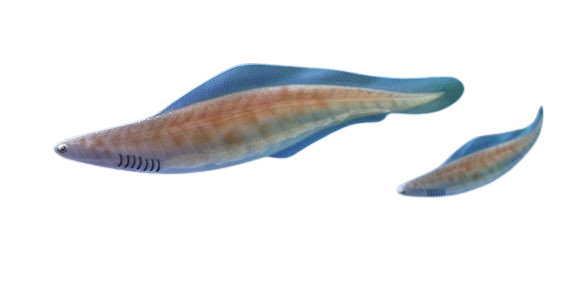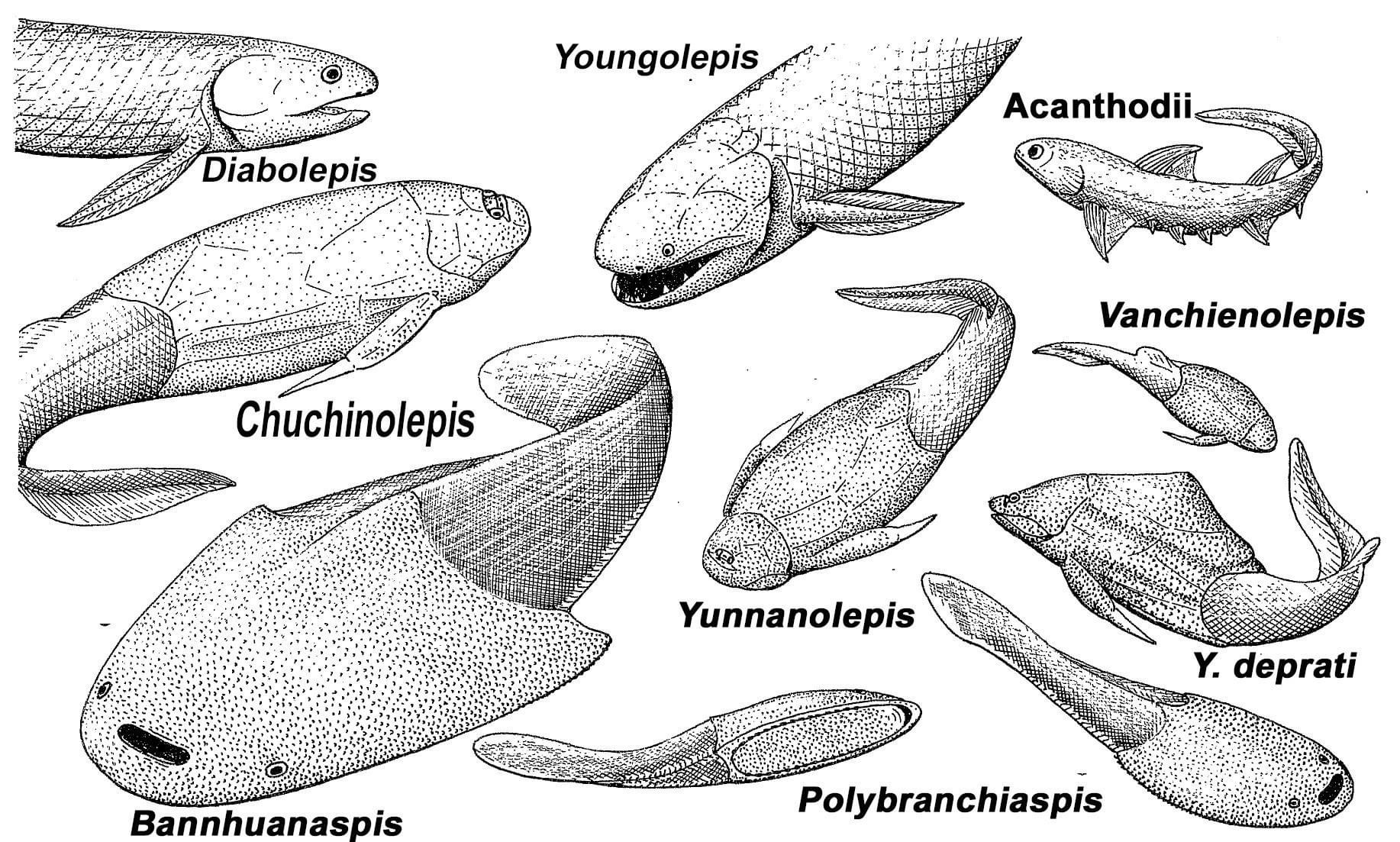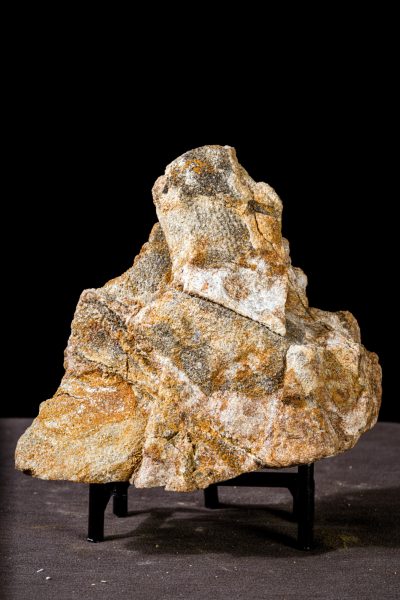
Lược sử phát triển của loài cá và hóa thạch cá tìm được ở Việt Nam
Development history of fishes and fish fossils found in Vietnam

Những sinh vật đầu tiên được xác định là cá nguyên thủy đã xuất hiện trong kỷ Cambri cách đây khoảng 530 triệu năm trước. Chúng chưa có hàm và mang, cũng chưa có cột sống, nhưng sự có mặt của thanh sụn đã cho phép chúng nhanh nhẹn hơn các động vật không xương sống khác. Hóa thạch giống Haikouichthys được coi là cá cổ xưa nhất, có phần đầu và đuôi khác nhau, cơ thể có đối xứng hai bên.
Trong lịch sử tiến hóa tiếp theo, Cá được xếp vào nhóm cận ngành “Pisces” thuộc siêu lớp Cá có hàm (Gnathastoma). Nhóm này được chia thành bốn lớp là:
- Cá da phiến (Placodermi)
- Cá sụn (Chondrichthyes)
- Cá gai (Acanthodii)
- Cá xương (Osteichthyes)
Trong đó, Cá da phiến đã bị tuyệt diệt vào cuối Devon và Cá gai vào cuối Permi sớm.
Hóa thạch cá được tìm thấy trong trầm tích Silur và Devon ở Bắc Bộ Việt Nam khá phong phú: Cá da phiến rất đa dạng về thành phần giống loài thuộc bộ Antiarchi (Yunnanolepis, Minicrania, Chuchinolepis, Vanchienolepis) và giống Tongdzuylepis của bộ Petalichthyida. Ngoài ra, cũng tìm thấy nhiều đại diện của lớp Khiên mũ (Galeapsida) thuộc siêu lớp Cá không hàm (Ahnatha): Polybranchiaspis, Laxaspis, Bannhuanaspis, Sanqiaspis v.v.. và Cá da phiến (Yunnanolepis, Petalichthyida, Arthrodira), Cá gai, Cá phổi (Youngolepis, Diabolepis) và Dạng động vật bốn chi (Kenichthys, Langdenia). Youngolepis và Kenichthys được coi là những loại Cá vây thùy cổ nhất trên thế giới hiện nay.

Hệ động vật cá trong trầm tích Devon hạ ở Quảng Bình cũng chứa các dạng Cá phổi và Cá da phiến như ở Bắc Bộ, nhưng vắng đại diện của lớp Khiên mũ và xuất hiện các dạng Cá da phiến tiến hóa hơn như Phlyctaeniidae (giống Lyhoalepis), Holonematidae.
Hóa thạch Cá da phiến Vietnamaspis (?) – Phát hiện tại: Đồ Sơn, Hải Phòng, Việt Nam – Tuổi: Devon sớm (419 – 410 triệu năm)
Placodermi fossil Vietnamaspis (?) – Found in: Do Son, Hai Phong, Vietnam – Age: Early Devonian (419 – 410 million years ago)
The first organism identified as a primitive fish appeared in the Cambrian period about 530 million years ago. They did not have jaws and gills, nor did they have a spine, but the presence of cartilaginous rods allowed them to be more agile than other invertebrates. Fossils such as Haikouichthys are considered to be the oldest fish, with different heads and tails, and bilaterally symmetrical bodies.
In subsequent evolutionary history, Fish were classified in the paraphyletic group “Pisces” of the superclass Gnathastoma. This group is divided into four classes named:
- Placodermi
- Chondrichthyes
- Acanthodii
- Osteichthyes
Placodermi were extinct in the late Devonian and Acanthodii in the end of Late Permian.
Fossils of fishes were found in Silur and Devon sediments in the North of Vietnam are quite rich: The Ichthyosaurs are very diverse in species composition of the branch Antiarchi (Yunnanolepis, Minicrania, Chuchinolepis, Vanchienolepis) and the genus Tongdzuylepis of the branch Petalichthyida. Many representatives of the class Galeapsida of the superclass Ahnatha: Polybranchiaspis, Laxaspis, Bannhuanaspis, Sanqiaspis etc. Lungfish (Youngolepis, Diabolepis) and tetrapods (Kenichthys, Langdenia) were also found. Youngolepis and Kenichthys are considered the oldest lobe-finned fish in the world today.
The fish fauna in the lower Devonian sediments in Quang Binh also contains the lungfish and placoderms as found in the North, but lacks representatives of the Galeaspida class and more evolved placoderm forms such as Phlyctaeniidae (genus Lyhoalepis), Holonematidae.
Bảo tàng Hóa thạch Hà Nội
Hanoi Fossil Museum

